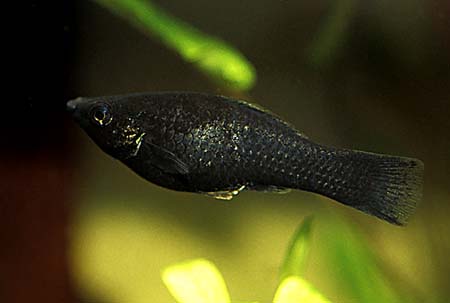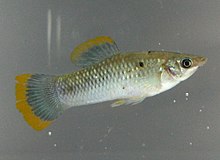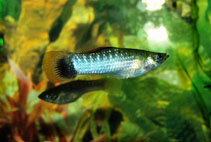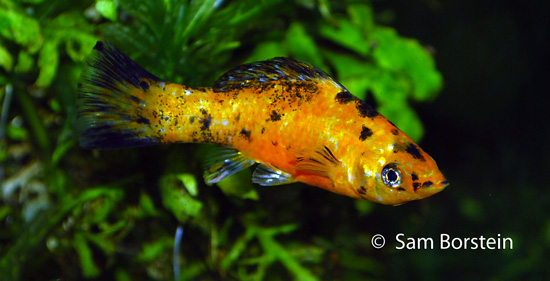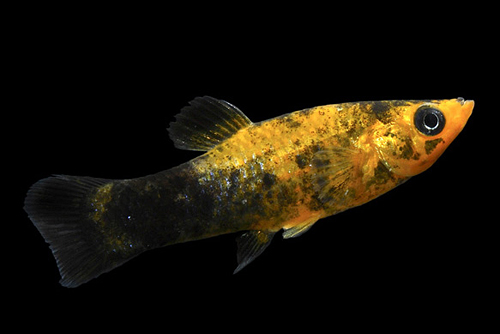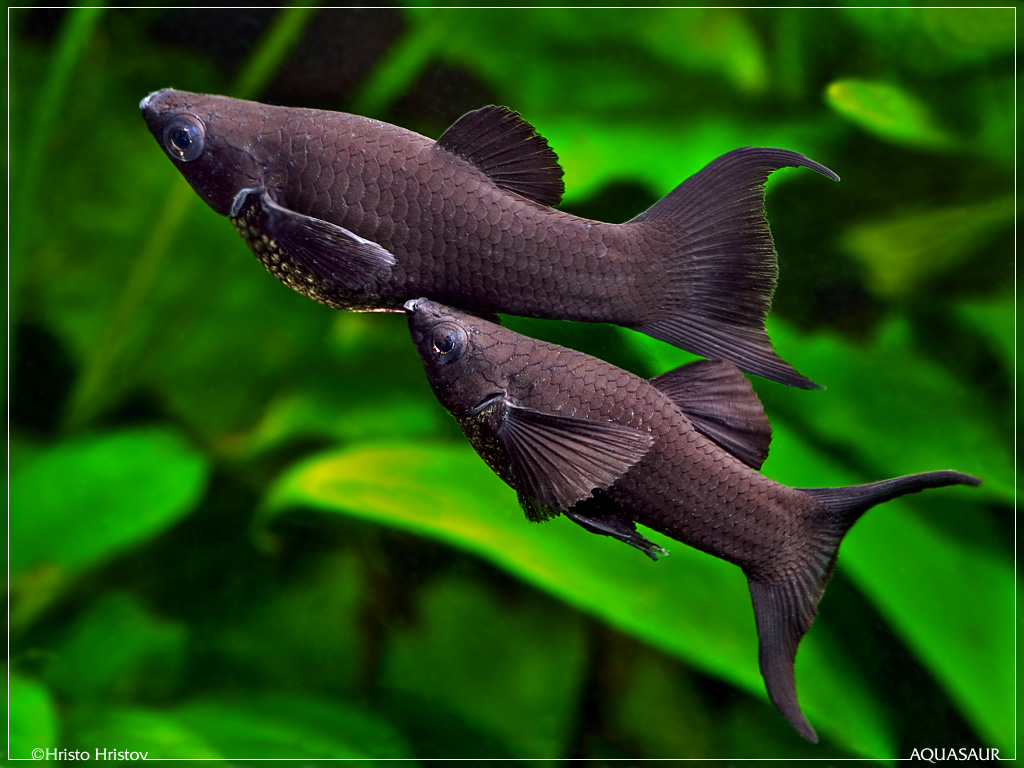Poecilia sphenops
Spitzmaulkärpfling ( Poecilia sphenops )
The Spitzmaulkärpfling ( Poecilia sphenops, Greek sphenops - Spitzkopf ) is occurring in South and Central America livebearers. Under the name Black Molly a black cultivar has found widespread use as an aquarium fish.
Distribution and habitat
The Spitzmaulkärpfling inhabits freshwater and brackish water deposits from Texas to Colombia and Venezuela. Like other Poecilia species is the Spitzmaulkärpfling in Europe occasionally found in artificially heated waters, such as the field of power plants. These populations are due to stocking by former holder. However, the species is not yet an established neozoon.
Appearance
The stretched body reaches in male Spitzmaulkärpflingen a total length of four to six inches. The females are six to ten inches significantly larger and act altogether fuller. The head is pointed. The species forms from a variety of local forms with different colorings, therefore, a general description of the drawing is very restricted. Often, the basic color is blue-gray to brown olive. To draw a plurality of longitudinal rows of orange polka dots and blue-green glittering spots on the sides of the body. The pectoral and pelvic fins are usually colorless, the anal fin often orange. Often black spots are found on the dorsal fin and not infrequently, a garnet rim with black edging.
Fins formula:
- Dorsal 8-9 in freshwater populations, 9-11 in brackish water populations ( in the region of the Panama Canal )
- Anal 8-10
- Pectoral 14
- Ventral 6
The Spitzmaulkärpfling contributes 25 to 30 scales in a median longitudinal row (MLR ).
Way of life
The food spectrum of Spitzmaulkärpflings includes not only plant foods, small crustaceans, insects and other invertebrates. The nursery algae (including Mikrozoobenthos it) can be easily scraped off, because the lower jaw is in itself to be resilient (thanks cartilage bar ) that the upper and lower teeth together may include 120 ° ( cf. similar in Helostoma temminkii ).
The very peaceful kind planted several times continued in the year. After a gestation period from 26 to 35 days 28 to 80 juveniles are born with a size of between six and eight millimeters. With a sufficient supply of food, the parents were not their offspring after.
System
The taxonomic placement of Spitzmaulkärpflings is difficult. The species is polytypic and several of her partially highly differentiated populations have been described as distinct species. These new species names were later declared to synonyms. Partial synonyms were also revalidisiert, such as the mangrove Molly ( Poecilia orri ) is again given species rank. Some closely related species, such as P. mexicana and P. maylandi may lose their independence and become synonyms of P. sphenops.
Cultivated forms
From the time in 1899 in Germany introduced species are a number of breeding influenced variants. In particular, the well-known since 1909 Black Molly is widespread. The cultivated forms have in common is, in comparison with the wild form higher sensitivity and an associated lower life expectancy. The breeding goals are fixed since 1989 by an international standard.

